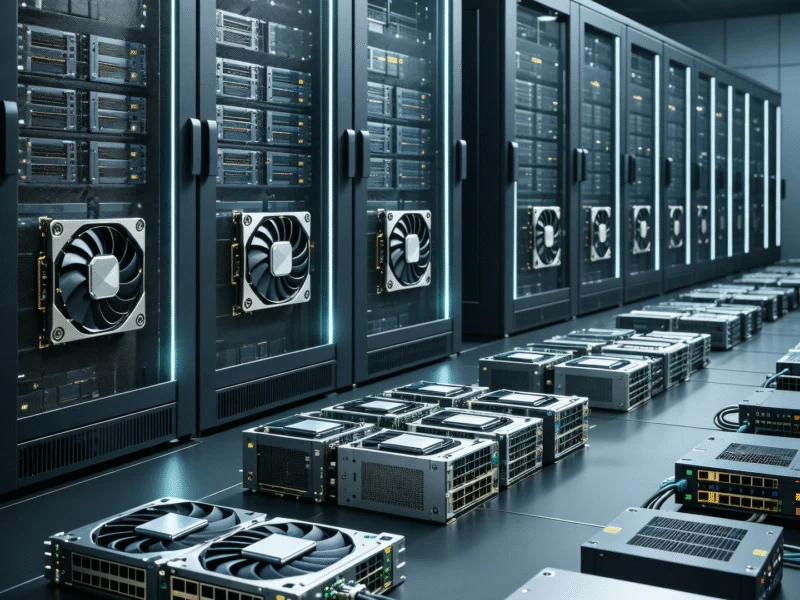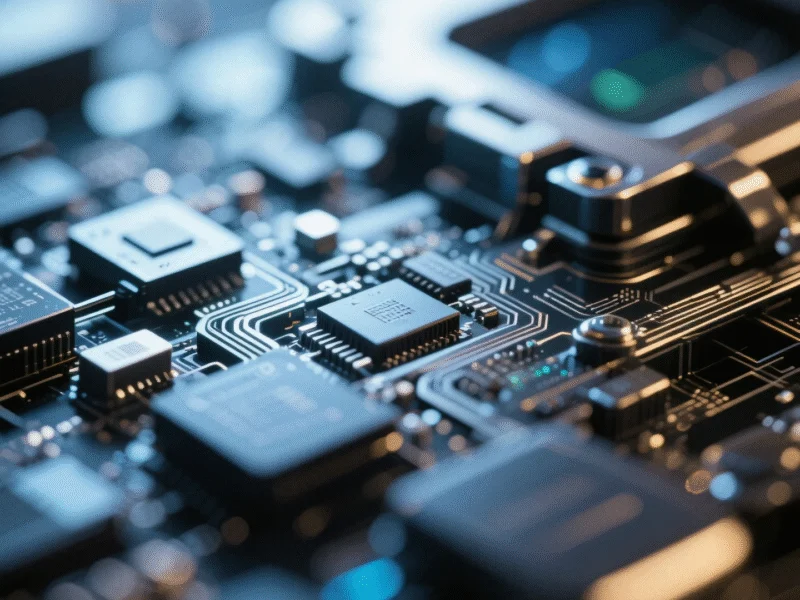The artificial intelligence revolution is entering its infrastructure phase, as evidenced by Broadcom’s massive 10.7% stock surge following its OpenAI partnership announcement for custom-designed inference chips. This collaboration, developed over 18 months, represents the latest move in what industry experts are calling the largest industrial undertaking in history, with OpenAI announcing roughly 36GW of data center capacity since January. The scale is staggering—equivalent to 18 Hoover Dams’ worth of power—and signals how the AI trade is shifting from software to critical hardware infrastructure.
Understanding the Broadcom-OpenAI Semiconductor Partnership
Broadcom and OpenAI revealed they’ve been co-designing custom chips specifically optimized for inference—the process of running AI models in production environments. According to Broadcom’s corporate profile, the company brings decades of semiconductor expertise to this partnership. The deployment of 10 gigawatts of these co-designed chips, networked through Broadcom’s Ethernet stack, is scheduled to begin late next year. This custom approach allows OpenAI to embed learnings from developing frontier AI models directly into hardware, potentially unlocking new capabilities while reducing operational costs.
OpenAI President Greg Brockman emphasized on CNBC that this isn’t about anticipating future demand but responding to current overwhelming needs. “We’re currently being swept along by the avalanche,” Brockman stated, noting that while ChatGPT was the fastest-growing consumer app in history, their new video generation tool Sora is growing even faster.
The Data Center Capacity Explosion in Context
To appreciate the scale of recent announcements, consider these developments:
- September 22: OpenAI’s 10GW deal for Nvidia-based data centers
- Early October: 6GW partnership with Nvidia competitor Advanced Micro Devices
- This week: 10GW Broadcom custom chip collaboration
These projects follow the massive $500 billion Stargate Project announced by OpenAI, Softbank, and Oracle, which targets 10GW capacity with potential for international expansion starting with Stargate UAE. Combined, these initiatives represent 26GW of deals in just three weeks, bringing OpenAI’s total announced capacity to 36GW since January.
As recent energy sector analysis demonstrates, power availability remains a critical constraint for technology expansion, making these coordinated infrastructure investments particularly significant.
What This Means for Semiconductor and AI Markets
Broadcom stock has gained roughly 54% year-to-date, reflecting investor recognition that the AI infrastructure buildout represents a generational opportunity. The company’s expertise in custom semiconductor design positions it uniquely to benefit from the shift toward specialized AI hardware. This trend mirrors developments in other technology sectors, where recent market analysis shows increasing focus on hardware differentiation.
The move toward custom inference chips also suggests a strategic shift in the AI competitive landscape. While Nvidia continues to dominate AI training workloads, inference optimization represents the next frontier for performance and cost efficiency. As companies like OpenAI develop deeper hardware integration, they may achieve significant competitive advantages in model deployment economics.
Broader Implications for Technology Regulation and Infrastructure
This unprecedented scale of data center expansion raises important questions about energy consumption, environmental impact, and regulatory frameworks. The equivalent of 18 Hoover Dams worth of power dedicated to AI computation represents a fundamental shift in global resource allocation. These developments occur alongside evolving technology regulations, including recent legislative changes addressing AI-generated content and digital safety.
The concentration of AI infrastructure investment also highlights geopolitical dimensions, with projects like Stargate UAE indicating global competition for AI leadership. As these data center projects materialize over the coming years, they’ll likely reshape not just technology markets but energy grids, real estate, and workforce development across multiple regions.
The Path Forward for AI Infrastructure Investment
Industry observers should watch several key developments:
- Timeline execution: Whether deployment schedules hold for late 2024/early 2025
- Performance metrics: How much efficiency improvement custom chips deliver versus off-the-shelf alternatives
- Competitive response: How other AI companies and cloud providers adjust their infrastructure strategies
- Regulatory environment: How governments respond to concentrated AI infrastructure development
The Broadcom-OpenAI partnership represents more than just another corporate collaboration—it signals the maturation of AI from experimental technology to industrial-scale infrastructure. As this transition accelerates, the companies controlling the hardware layer may ultimately wield as much influence as those developing the algorithms.



